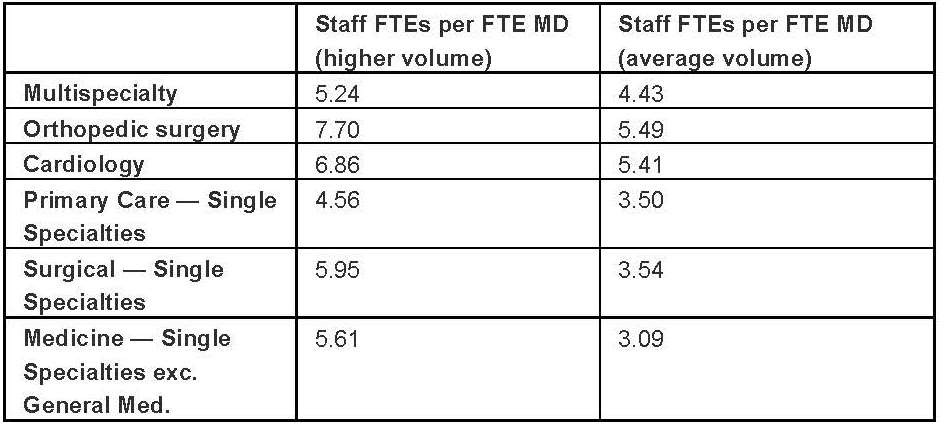
What’s Your Ideal Medical Practice Staffing Mix?
There is no hard and fast rule on how many staff you require for your practice because each specialty and situation may require something different. It is important to understand your medical practice staffing needs based on the job functions required to efficiently operate and manage your practice. Understaffing can cause breakdown in operations that could result in errors, reduction in revenue, and patient dissatisfaction. Overstaffing may cause a loss of productivity and an unnecessary financial overhead burden.
How Many Staff Should You Have?
Many of the medical associations such as Professional Association of Healthcare Office Management (PAHCOM) and Medical Group Management Association (MGMA) benchmark how many full-time employees you need per full-time provider. A full-time employee (FTE) is an employee who works between 35 and 40 hours per week. A practice’s FTEs may include front desk, billing, office management, medical assistants, nurses, and even scribes.
There are many factors that can influence your staffing like patient volume, specialty, and the use of technology.
Here are some recommendations from MGMA to use as a guide for your practice.

Calculating Your Staffing Ratio
Before you calculate your practice’s staff-to-provider ratio, however, it’s essential to know how to do it correctly. It seems simple enough: Count up the doctors in your practice and divide by the number of billing staff, right? Well, not quite.
Rather than count each physician individually—a common mistake—practices must make sure to count physician FTEs. To properly calculate the number of physician FTEs within your practice, divide the total number of patient encounters performed during the past year for your entire practice by the average number of yearly physician encounters, (This number will be between 3,600 and 4,800 depending on your specialty. Primary care tends to be on the high end at 4,800 and single surgical specialists, like orthopedics tend to be on the low side at 3,600). The reason that you want to perform your FTE calculation in this manner is to accurately account for physicians who work part-time, job share, work any other less-than-full-time schedule, or manage their time efficiently and therefore are able to treat more patients.
To calculate the number of billing staff FTEs, you’ll want to define an FTE as an employee who has been compensated for 2,080 hours of work (40 hours/week X 52 weeks/year) during the last year. Like the physician FTE calculation, this will take into account any employees who work any schedules more or less than 40 hours per week. Hours to include in this calculation should be related to any personnel who participate in the physician revenue cycle, including insurance verification, data entry, coding, payment posting, accounts receivable follow-up, patient statement processing, customer service, etc.
Once you know your medical practice staffing ratio, compare it to the chart provided above. If you are much higher, it’s probably time to look at your staffing, processes, and technology. The next blog in this series will review areas where you may find inefficiencies and ways that process changes or technology can help.
About the Author
 Rochelle Glassman is President & CEO of United Physician Services. Rochelle brings a passionate, very practical “do it today” approach to making medical practices successful and getting physicians paid more.
Rochelle Glassman is President & CEO of United Physician Services. Rochelle brings a passionate, very practical “do it today” approach to making medical practices successful and getting physicians paid more.
